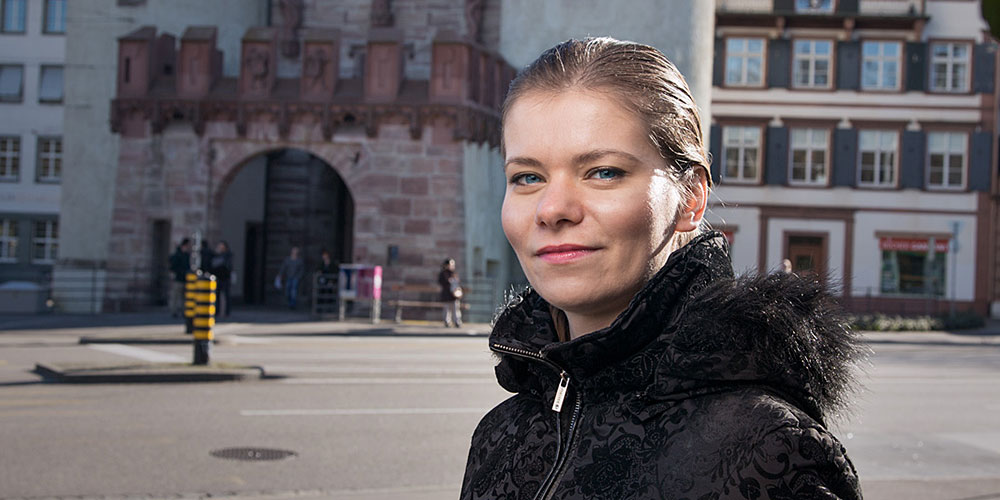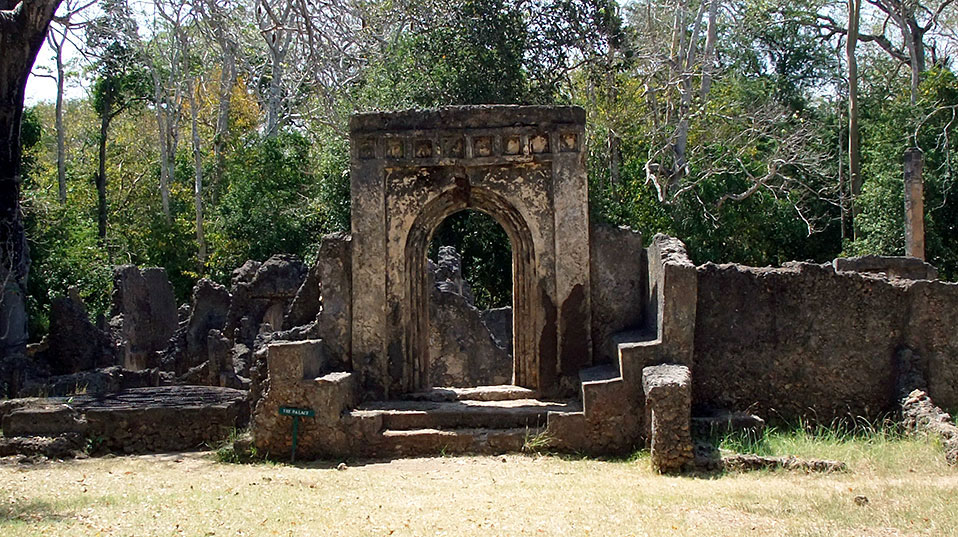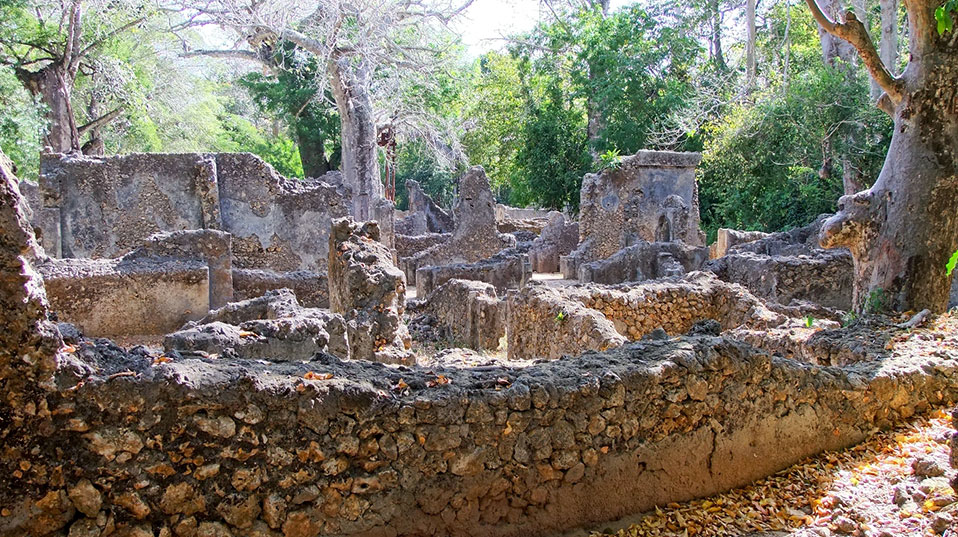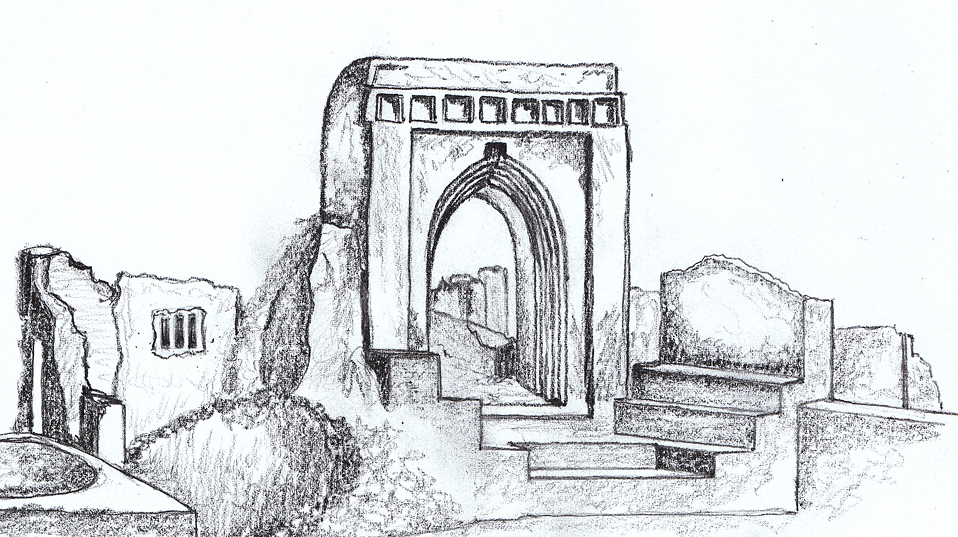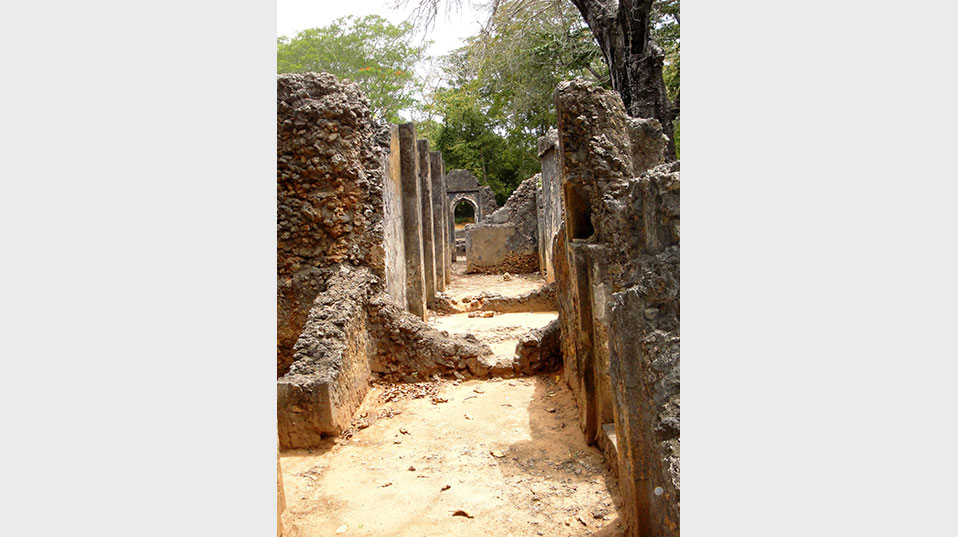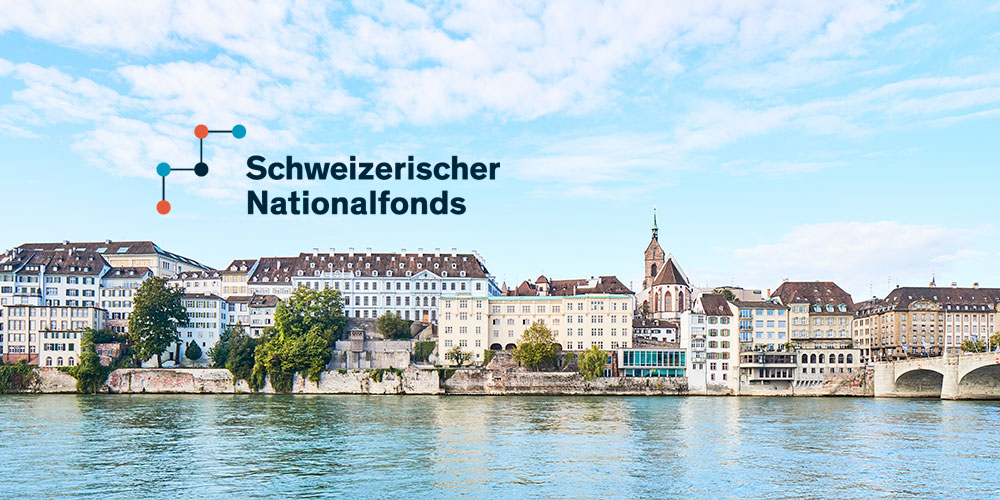“The information about the site is very limited, but we still have the ruins”
Archaeologist Dr. Monika Baumanová’s research focuses on the development of urban environments in Africa from the 14th to the 20th century. She is particularly interested in the interplay between spatial and social change. The visiting researcher, currently at the University of Basel’s Centre for African Studies, gives us an insight into her work.
23 February 2016
Monika Baumanová, you’re spending just short of two years as a visiting researcher at the University of Basel. What is it that brings you here?
Since completing my degree in archaeology, I've focused on the spatial and material aspects of ancient cities on East Africa’s Swahili Coast. I'd now like to complement my research with approaches from ethnology, history, and the history of architecture. My main interest lies in establishing a long-term perspective, and drawing comparisons with other regions, such as West Africa. I’d like to know what impact colonialism had on urban development, how it shaped the character of urban life. Up until now there has been very little discourse between African archeology and the branches of African studies that are oriented towards social science, despite the fact that they have much to offer each other. The University of Basel and the Centre for African Studies allow me to work in a multidisciplinary environment that also offers a great many points of reference.
So what does archaeology have to offer African Studies and the social sciences?
As an archaeologist, physical objects and material culture are really at the heart of what I do. Wherever and whenever you look, objects, whether they're clothes, jewelry or commodities, have a message to communicate to us. This kind of communication is encountered, more than anywhere else, in cities. High population densities mean that you find a great number of messages, from individuals or groups, but also from the society as a whole. People’s lifestyles are expressed in the physical structure of their cities, for example in large, centrally-situated churches in predominantly Christian cities, or Mosques in Muslim ones. Individual buildings make a statement about the lifestyles and identities of both individuals and groups of people.
How do you go about recording these kinds of statements? What methods do you work with?
I work with spatial analysis. In my last research project, I looked at how the buildings of the urban elites on the East coast of Africa have developed over time to respond to the changing requirements of society. In Kenya I worked on the Ruins of Gedi. I looked at stone structures that dated mainly from the 13th to 16th centuries.
My work centered around a complex of residential buildings known as the Palace of Gedi. It was excavated after the Second World War using methods that were normal at the time. In the process, a lot of data was lost that could have been preserved using the technical means we have at our disposal today. As a result, the information we have about the site is very limited. But we still have the ruins. Using spatial analysis, I was able to make new findings based on what remained. I looked systematically at how spatial structures had developed over time. How were rooms made accessible and how were they connected with each other? How did people move around, both in and between rooms? Which rooms were visible and which were kept out of sight through architectural arrangements?
What kinds of discoveries did you make?
In the case of the Palace of Gedi, the building belonged to merchants. An important part of their work consisted in receiving visitors – other merchants, current or prospective business partners from India and Arabia, from other cities along the African East coast or from inland areas. The Palace had to make an impression on these guests and demonstrate power and status. Each visitor needed to see how much prosperity the merchants had generated, so the rooms were conceived according to this idea. Over time, though, the structure was augmented with rooms that were hidden from visitors. The owners could therefore show off their wealth but at the same time ensure they had some privacy. The architectural structures of these ruins are evidence of communication through physical objects, and the messages they conveyed to guests and neighbours can still be recognized today. The development of the buildings over the centuries bears witness to changes in the lifestyles of the elites, and to changes in social and cultural norms.
Do these kinds of developments carry forward from one society to another, or even across continents and over the centuries?
The basic questions remain the same. How buildings are constructed depends on what function and significance they have, how people move around in them, how they’re required to behave, what should be visible and what shouldn’t. For example, should a town hall or a government building feature large rooms in which sizable gatherings can hold discussions and negotiations? Or should there be smaller, closed off areas, where small groups can make decisions? How are adjustments to these kinds of features made, and who has control over the changes?
What can the history of urban development tell us about our own urban society today?
Urbanization is one of the basic processes of present-day global development. All over the world, though, this process is shaped by other historical conditions and complex social relationships. To understand local developments, it’s important to understand urbanization in all its global diversity. Generally, cities are planned and built for more than just one generation, but the political, economic and cultural functions of buildings and other structures are constantly changing, which can lead to certain tensions. Analysis of historical urban development broadens our perspective on how urban spaces are shaped and deployed to convey an identity and a view of the world. It helps us to understand contemporary tensions between spatial development and social dynamics.
Marie Skłodowska-Curie Actions funded fellowship
Archaeologist Monika Baumanová is currently on a Marie Skłodowska-Curie Individual Global Fellowship from the European Commission, at the Centre for African Studies Basel and the Department of Archaeology and Ancient History at Uppsala University in Sweden. She studied Archaeology at University College London, where she specialized on Africa. In 2012 she got her PhD from the University of West Bohemia in Pilsen (Czech Republic).

